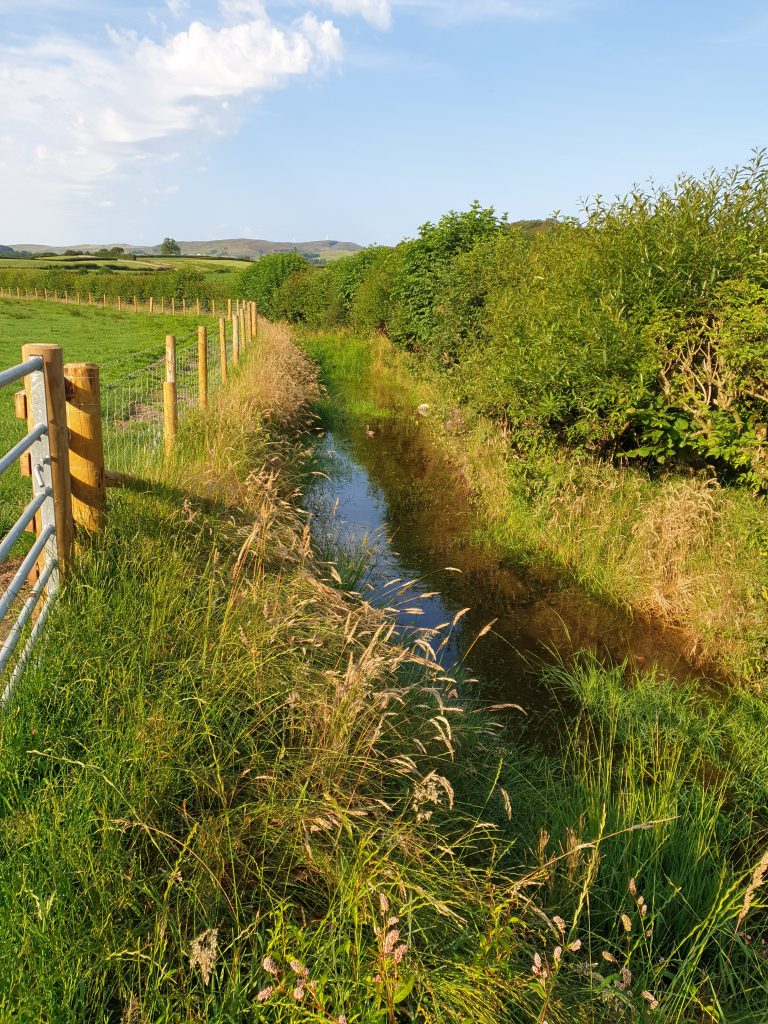Constructed Farm Wetlands
20 June 2022With the most recent round of the Sustainable Agriculture Capital Grant Scheme application window now in the rear-view mirror, farmers across Scotland operating on slurry systems will be waiting anxiously to see what level of support they will receive for the implementation of low carbon, precision slurry application implements. For many, the application window was an opportunity to invest in protection of the farmed water environment.
Cutting down on dirty water and facilitating its safe discharge to the environment can help make the most of existing farm slurry storage, creating a more concentrated, nutrient rich slurry and thus cut diffuse pollution to important watercourses, priority and bathing water catchments.
Constructed farm wetlands (CFW) and sustainable drainage systems (SuDS) are different from the naturally occurring wetland habitats across Scotland; they are man-made systems that mimic the water treatment capabilities of conventional wetlands. The combination of uptake of nutrients by plants, sedimentation and exposure to light can treat dirty water, and while they are artificial, they can over time build significant nature value too. There are rules on what can be discharged to CFW, as detailed in table 1 below.
Table 1: Comparisons of what can and cannot be discharged to CFW.
| Can be discharged | Cannot be discharged |
|---|---|
| Livestock handling areas where livestock are held occasionally for less than 24 hours | The treatment of more nutrient rich effluent types such as slurries, silage effluent and raw milk |
| Lightly contaminated concrete areas as a result of vehicle and occasional livestock movements | The treatment of run-off containing veterinary medicines such as sheep dip, or pesticides, such as sprayer or dipping equipment washings |
| Machinery washings (unless contaminated with pesticides and medicines) | |
| Winter run–off from silage pits between 1st November in one year and 30th April in the next | |
| Baled silage storage areas on steading |
A cost benefit analysis was carried out in 2008 at the Greenmount Campus, CAFRE, Dairy Unit. The analysis assumed that best practice was being maintained on a 180-cow unit, with a yard of 3000m2 and producing 5m3 of parlour washings each day. The findings suggested that a CFW could represent an annual saving of £4,365 compared to a conventional storage and spreading system.
With fertiliser and fuel prices at historic highs, can you afford to be hauling and spreading a diluted product to land?
The Agri-Environment Climate Scheme (AECS), confirmed until 2024, provides funding support to help in the creation of CFW as well as other options like sediment traps and swales. Levels of support depend on the type of liner used; £9/m2 for proprietary linings or £5 for soil liners. Current recommendations are that any wetland should be designed in accordance with the Constructed Farm Wetland Design Manual for Scotland and Northern Ireland, 2008.
A cost benefit analysis was carried out in 2008 at the Greenmount Campus, CAFRE, Dairy Unit. The analysis assumed that best practice was being maintained on a 180-cow unit, with a yard of 3000m2 and producing 5m3 of parlour washings each day. The findings suggested that a CFW could represent an annual saving of £4,365 compared to a conventional storage and spreading system.
With fertiliser and fuel prices at historic highs, can you afford to be hauling and spreading a diluted product to land?
The Agri-Environment Climate Scheme (AECS), confirmed until 2024, provides funding support to help in the creation of CFW as well as other options like sediment traps and swales. Levels of support depend on the type of liner used; £9/m2 for proprietary linings or £5 for soil liners. Current recommendations are that any wetland should be designed in accordance with the Constructed Farm Wetland Design Manual for Scotland and Northern Ireland, 2008.
alexander.pirie@sac.co.uk; 01292 525036
Sign up to the FAS newsletter
Receive updates on news, events and publications from Scotland’s Farm Advisory Service

